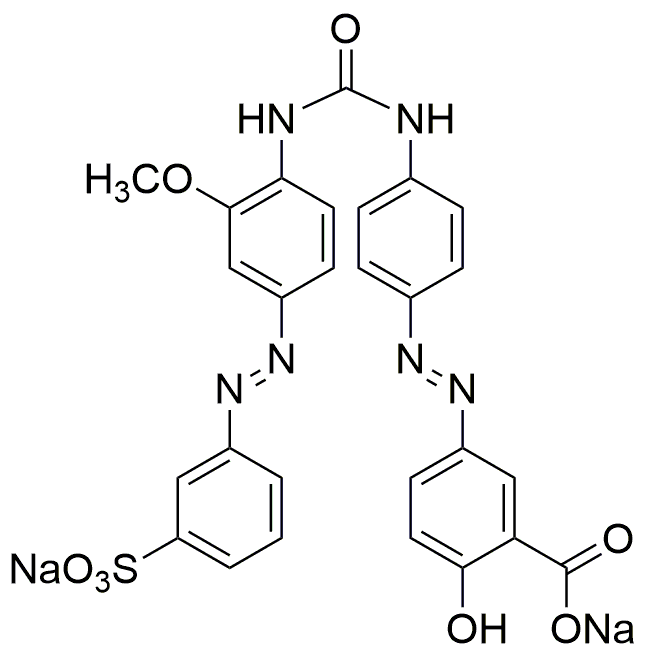Direct yellow 44 is widely utilized in research focused on:
- Dyeing Textiles: This compound is primarily used in the textile industry for dyeing fabrics, providing vibrant yellow hues that are resistant to fading. Its excellent lightfastness makes it ideal for clothing and upholstery.
- Food Coloring: It serves as a food dye, approved for use in various food products. Its bright color enhances the visual appeal of items like candies and beverages, making them more attractive to consumers.
- Biological Staining: In laboratory settings, it is used as a staining agent in histology and microbiology. This application helps researchers visualize cellular structures under a microscope, aiding in the study of diseases and biological processes.
- Cosmetic Formulations: Direct yellow 44 is also found in cosmetic products, where it provides color to items such as lotions and makeup. Its safety profile makes it a preferred choice for formulators.
- Research and Development: The compound is utilized in various research applications, including the development of new dyes and pigments. Its unique properties allow scientists to explore innovative uses in materials science.
General Information
Properties
Safety and Regulations
Applications
Direct yellow 44 is widely utilized in research focused on:
- Dyeing Textiles: This compound is primarily used in the textile industry for dyeing fabrics, providing vibrant yellow hues that are resistant to fading. Its excellent lightfastness makes it ideal for clothing and upholstery.
- Food Coloring: It serves as a food dye, approved for use in various food products. Its bright color enhances the visual appeal of items like candies and beverages, making them more attractive to consumers.
- Biological Staining: In laboratory settings, it is used as a staining agent in histology and microbiology. This application helps researchers visualize cellular structures under a microscope, aiding in the study of diseases and biological processes.
- Cosmetic Formulations: Direct yellow 44 is also found in cosmetic products, where it provides color to items such as lotions and makeup. Its safety profile makes it a preferred choice for formulators.
- Research and Development: The compound is utilized in various research applications, including the development of new dyes and pigments. Its unique properties allow scientists to explore innovative uses in materials science.
Documents
Safety Data Sheets (SDS)
The SDS provides comprehensive safety information on handling, storage, and disposal of the product.
Product Specification (PS)
The PS provides a comprehensive breakdown of the product’s properties, including chemical composition, physical state, purity, and storage requirements. It also details acceptable quality ranges and the product's intended applications.
Certificates of Analysis (COA)
Search for Certificates of Analysis (COA) by entering the products Lot Number. Lot and Batch Numbers can be found on a product’s label following the words ‘Lot’ or ‘Batch’.
*Catalog Number
*Lot Number
Certificates Of Origin (COO)
This COO confirms the country where the product was manufactured, and also details the materials and components used in it and whether it is derived from natural, synthetic, or other specific sources. This certificate may be required for customs, trade, and regulatory compliance.
*Catalog Number
*Lot Number
Safety Data Sheets (SDS)
The SDS provides comprehensive safety information on handling, storage, and disposal of the product.
DownloadProduct Specification (PS)
The PS provides a comprehensive breakdown of the product’s properties, including chemical composition, physical state, purity, and storage requirements. It also details acceptable quality ranges and the product's intended applications.
DownloadCertificates of Analysis (COA)
Search for Certificates of Analysis (COA) by entering the products Lot Number. Lot and Batch Numbers can be found on a product’s label following the words ‘Lot’ or ‘Batch’.
*Catalog Number
*Lot Number
Certificates Of Origin (COO)
This COO confirms the country where the product was manufactured, and also details the materials and components used in it and whether it is derived from natural, synthetic, or other specific sources. This certificate may be required for customs, trade, and regulatory compliance.


